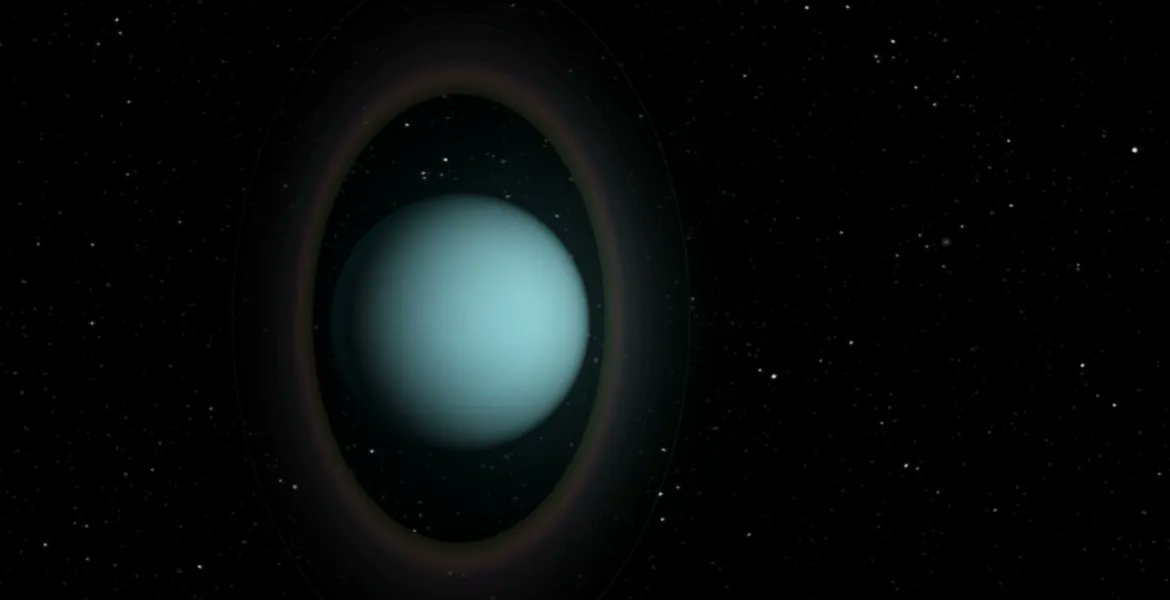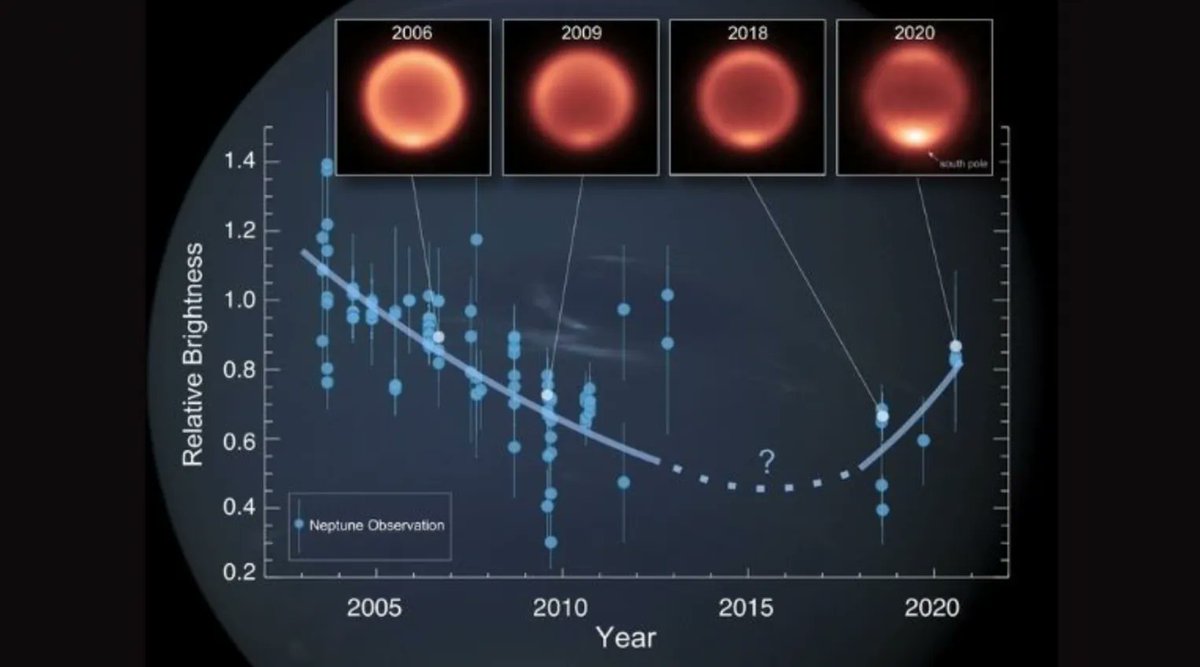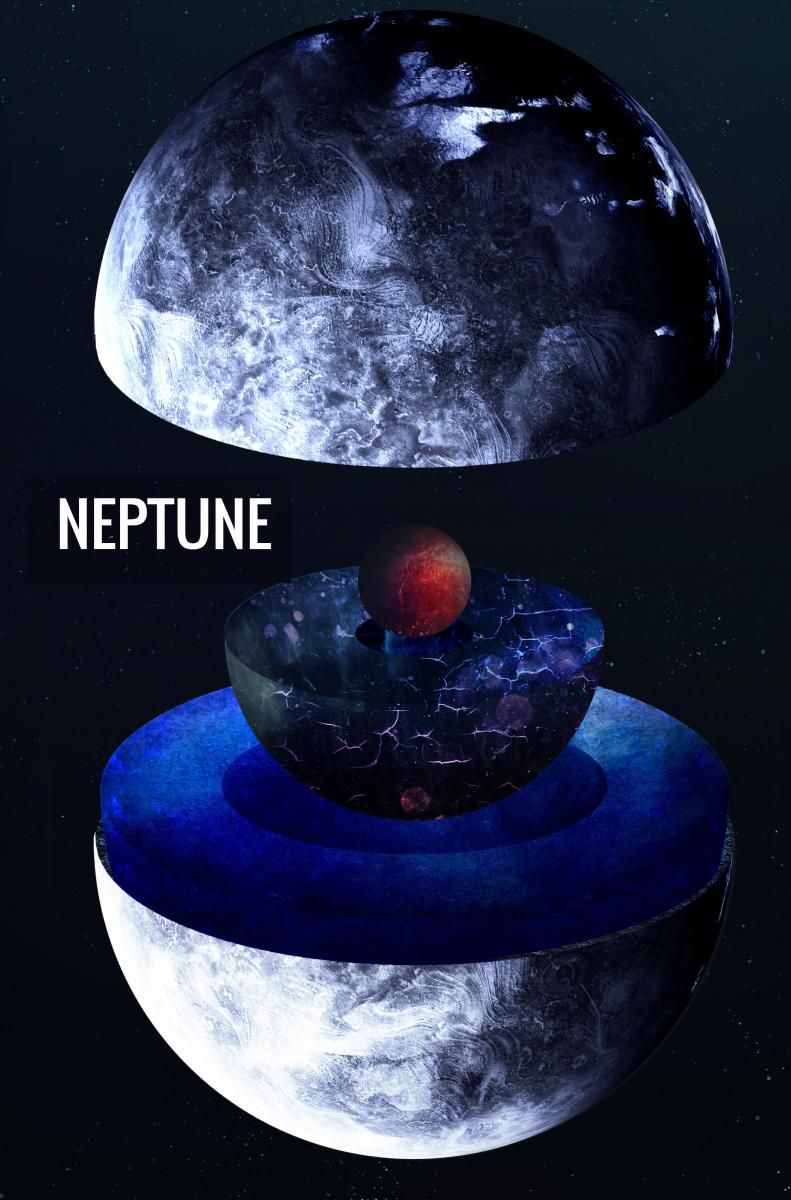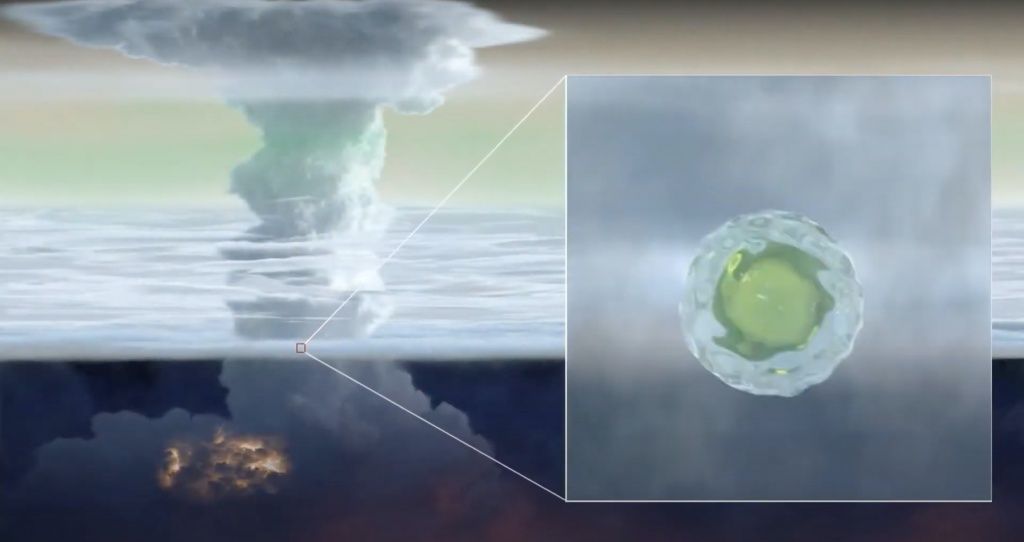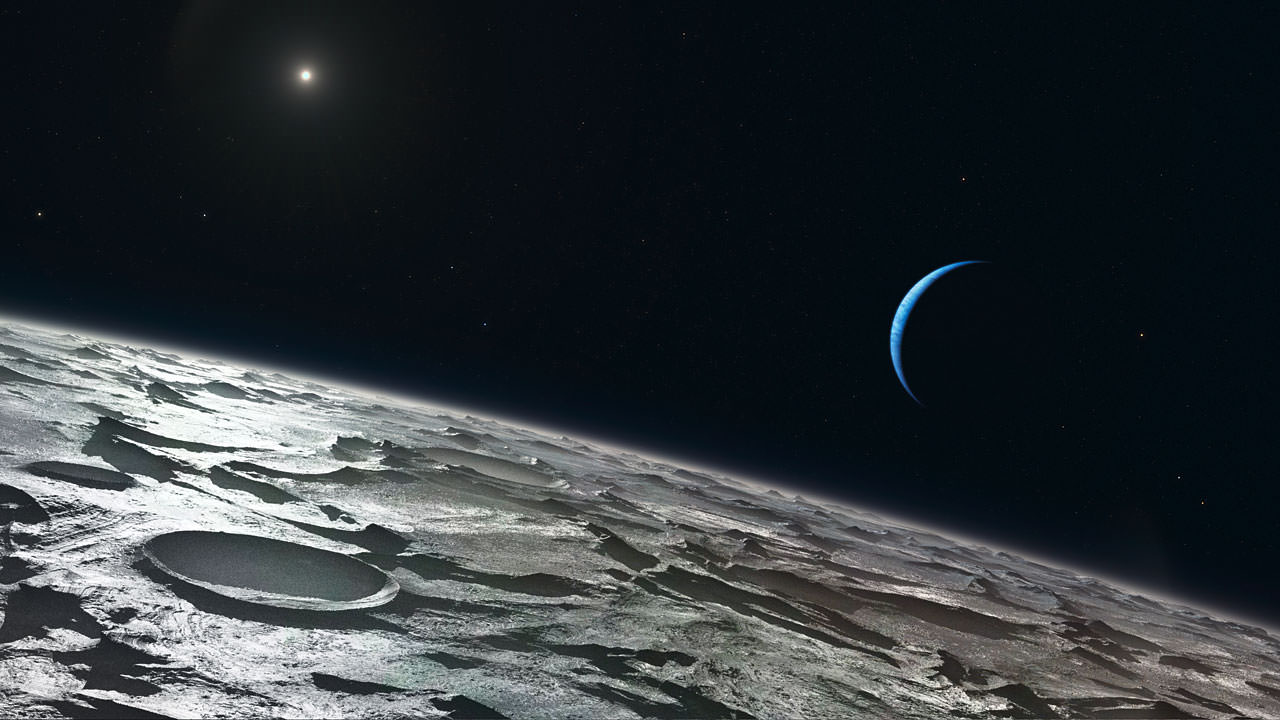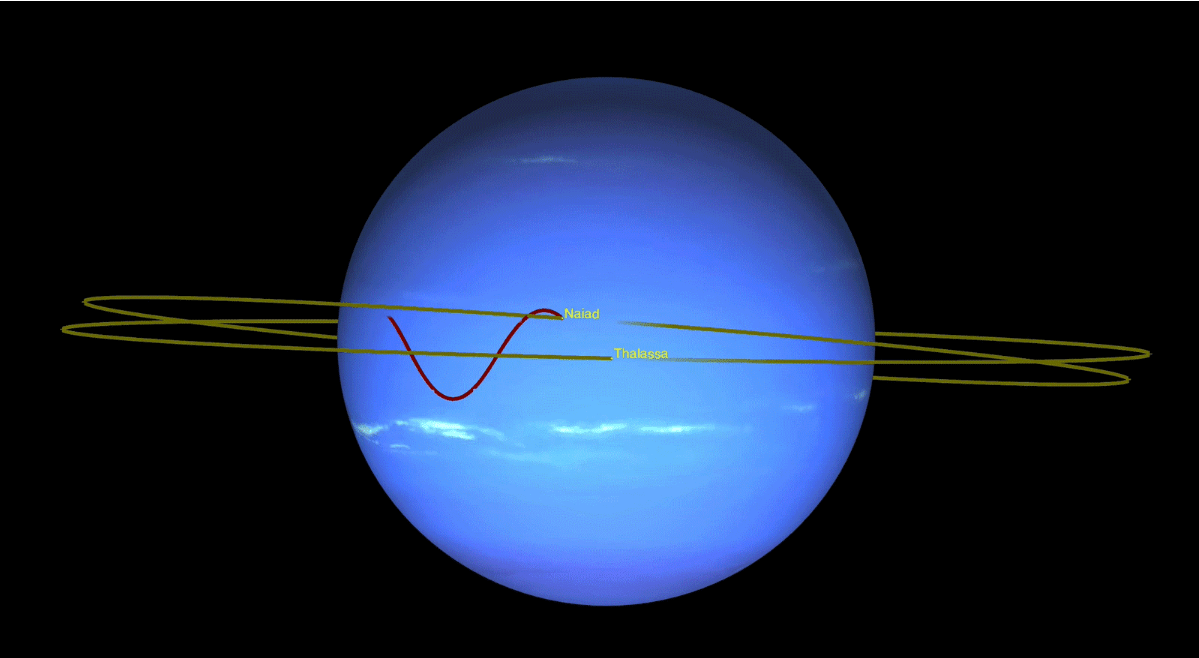Mapping the interior of the ice giants is difficult, to say the least. Not only are they far away and therefore harder to observe, but their constant ice cover makes it extremely hard to detect what lies underneath. So scientists must devise more ingenious ways to see what’s inside them. A team from the University of Idaho, Cal Tech, Reed College, and the University of Arizona think they might have come up with a way – to look at the structure of Neptunes’ and Uranus’ rings.
Continue reading “The Rings of Uranus and Neptune Could Help map Their Interiors”Why are Uranus and Neptune Different Colors? Haze
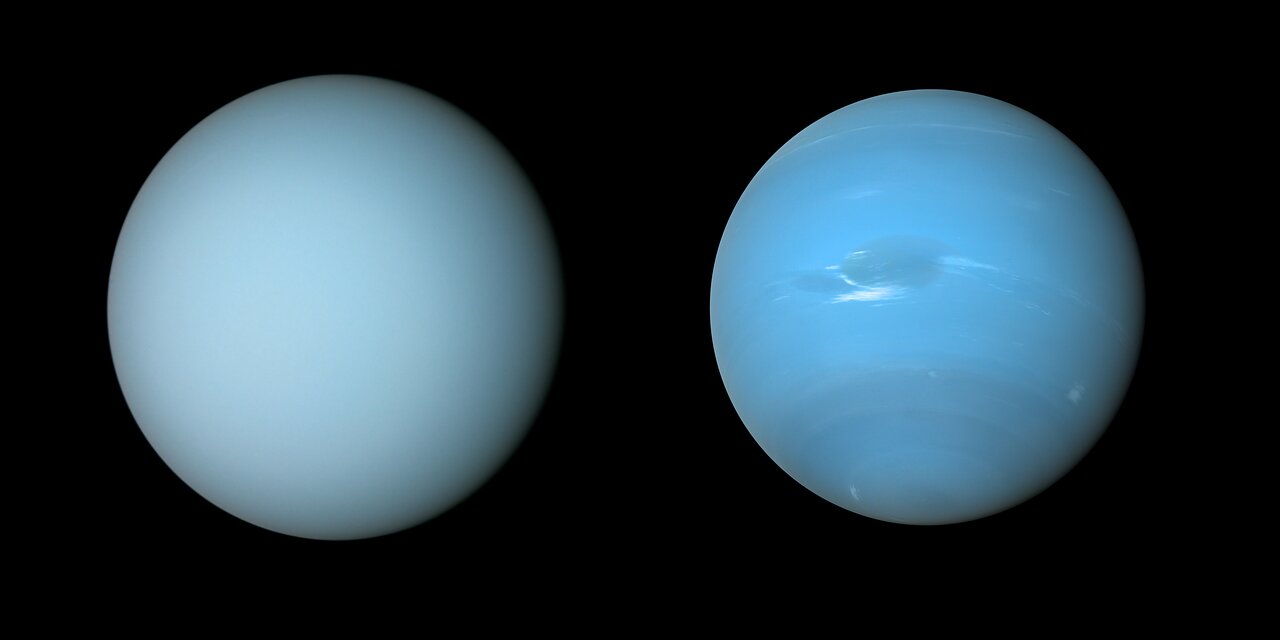
Way back in the late 1980s, the Voyager 2 spacecraft visited Uranus and Neptune. During the flybys, we got to see the first close-up views of those ice giants. Even then, planetary scientists noticed a marked color difference between the two. Yes, they both sport shades of blue. But, if you look closely at Uranus, you see a featureless pale blue planet. Neptune, on the other hand, boasts interesting clouds, dark banding, and dark spots that come and go. They’re all set against a darker blue backdrop.
So, why the difference? Planetary scientists have long suspected aerosols (droplets of gas that have liquids or dust suspended in them) in each atmosphere. But, according to a team of scientists studying the layers of the planets, the hazes those aerosols create may only be part of the story.
Continue reading “Why are Uranus and Neptune Different Colors? Haze”Neptune’s Temperature is Behaving Strangely
One of the great things about science is that it builds on itself over time. Data collected decades ago is still valid and helps scientists spot trends that would otherwise be lost in the flurry of new data they are trying to collect. And sometimes, that data holds something interesting. Such is the case when a group of scientists took a look at the infrared data of Neptune’s atmosphere and found not one but two weird changes happening.
Continue reading “Neptune’s Temperature is Behaving Strangely”Why do Uranus and Neptune Have Magnetic Fields? Hot ice
The outer “ice giant” planets, Neptune and Uranus, have plenty of mysteries. One of the biggest is where exactly they got their magnetic fields. They are strong at that, with Neptune’s being twenty-seven times more powerful than Earth’s, while Uranus’ varies between ? and four times Earth’s strength. Chaos rules in these electromagnetic environments, making them exceptionally hard to both understand and model. Now a team of researchers led by Dr. Vitali Prakpenka of the University of Chicago thinks they might have found the underlying cause of both the field’s strength and its randomness – “hot ice.”
Continue reading “Why do Uranus and Neptune Have Magnetic Fields? Hot ice”Giant Balls of Mush Made From Ammonia and Water Form in the Atmospheres of Uranus and Neptune
One advantage to planetary science is that insights from one planet could explain phenomena on another. We understand Venus’ greenhouse gas effect from our own experience on the Earth, and Jupiter and Saturn share some characteristics. But Jupiter also provides insight into other, farther out systems, such as Uranus and Neptune. Now, a discovery from a spacecraft orbiting Jupiter might have solved a long-standing mystery about Uranus and Neptune – where has all the ammonia gone?
Continue reading “Giant Balls of Mush Made From Ammonia and Water Form in the Atmospheres of Uranus and Neptune”Hubble Releases a New Image of Neptune, Revealing a Rapidly Shifting Storm
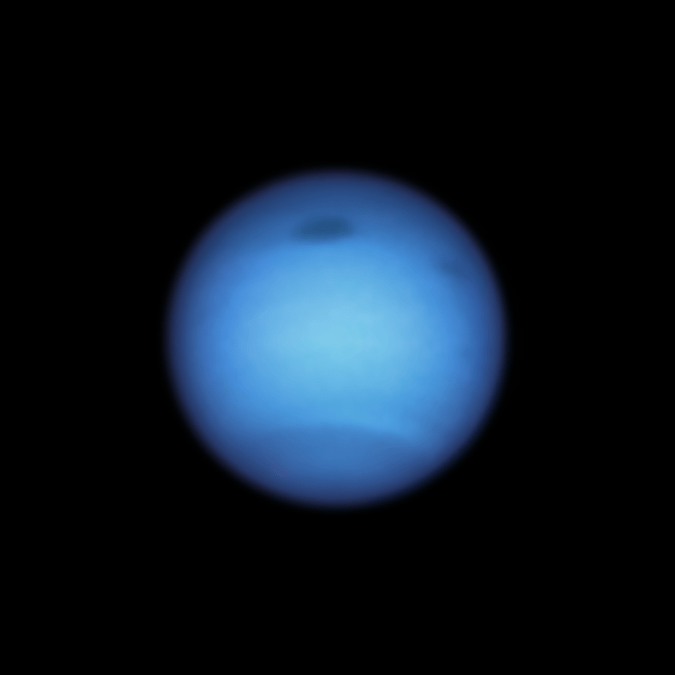
Storms on Neptune seem to follow a pattern of forming, strengthening and then dissipating over the course of about two Earth years. But a Neptunian storm spotted in the planet’s atmosphere over two years ago has done something quite different: it has reversed course and is still going strong.
Continue reading “Hubble Releases a New Image of Neptune, Revealing a Rapidly Shifting Storm”Neptune & Triton – August 31, 1989.
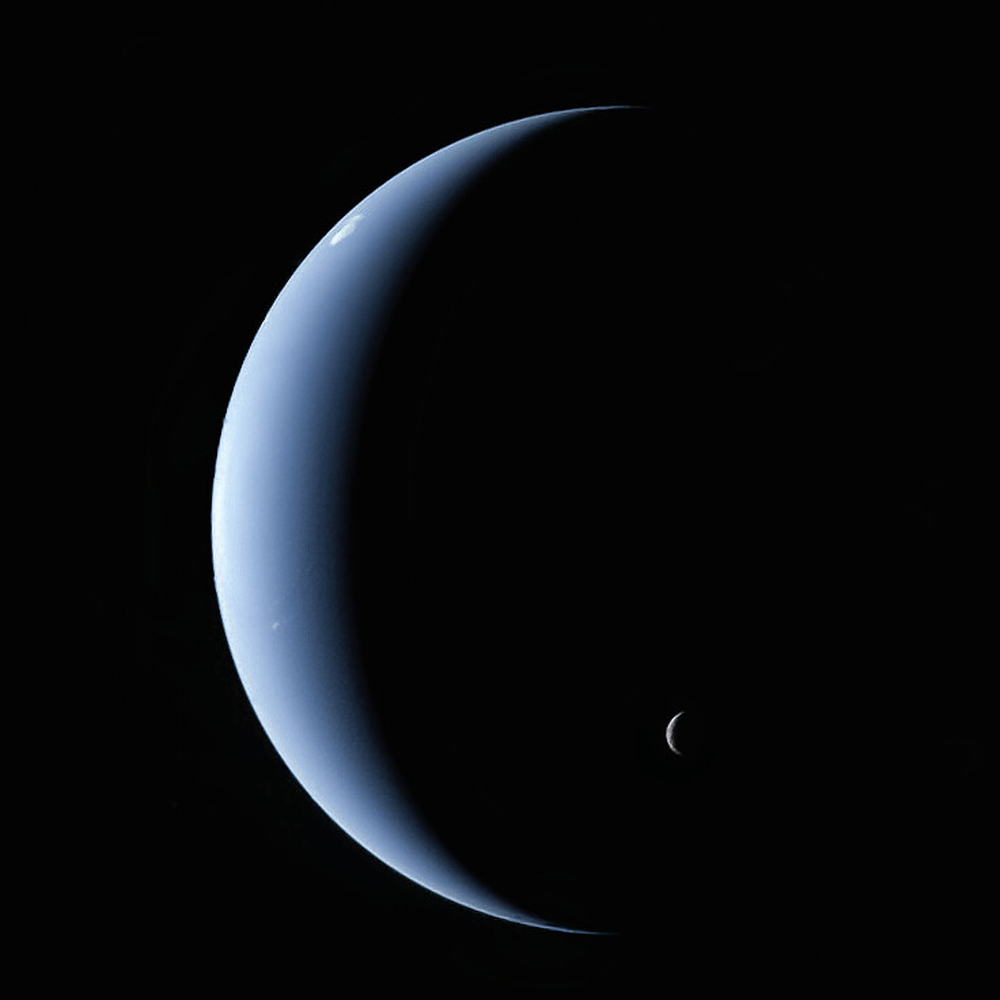
Image-processor extraordinaire Kevin Gill has reached back in time to give us a new image of Neptune and its moon Triton.
When NASA’s Voyager 2 spacecraft flew past Neptune and Triton in August 1989, its cameras were very busy. Kevin has taken separate color-filtered images from that visit and calibrated and combined them to give us a new, almost haunting look at the planet and its largest moon.
Continue reading “Neptune & Triton – August 31, 1989.”NASA Thinks it’s Time to Return to Neptune With its Trident Mission
Is it time to head back to Neptune and its moon Triton? It might be. After all, we have some unfinished business there.
It’s been 30 years since NASA’s Voyager 2 spacecraft flew past the gas giant and its largest moon, and that flyby posed more questions than it answered. Maybe we’ll get some answers in 2038, when the positions of Jupiter, Neptune, and Triton will be just right for a mission.
Continue reading “NASA Thinks it’s Time to Return to Neptune With its Trident Mission”Two of Neptune’s Moons Dance Around Each Other as they Orbit
Like a long-married couple accustomed to each other’s kitchen habits, two of Neptune’s moons are masters at sharing space without colliding. And though both situations may appear odd to an observer, there’s a certain dance-like quality to them both.
Continue reading “Two of Neptune’s Moons Dance Around Each Other as they Orbit”Say Hello to Hippocamp! The New Moon Discovered at Neptune, Which Could Have Broken off from the Larger Moon Proteus
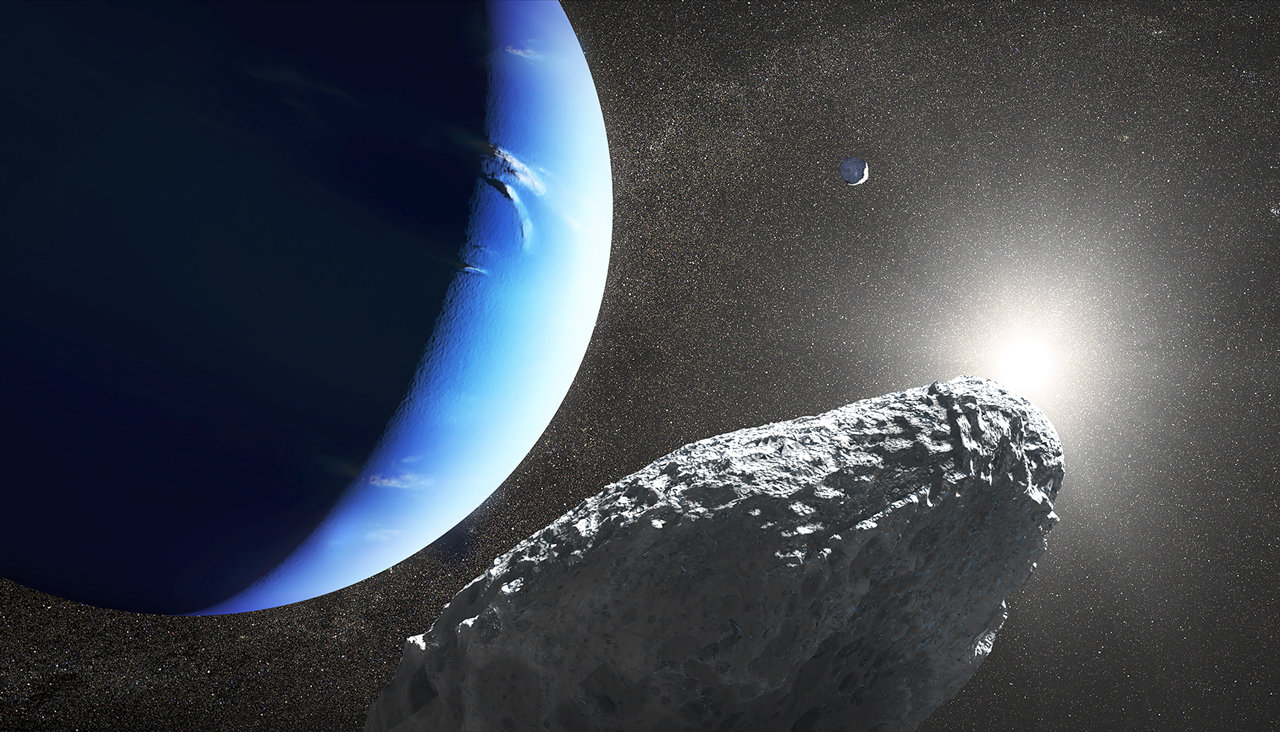
Moons have the coolest names, don’t they? Proteus, Titan, and Callisto. Phobos, Deimos, and Encephalitis. But not Io. That’s a stupid name for a moon. There’s only two ways to pronounce it and we still get it wrong. Anyway, now we have another cool one: Hippocamp!
Okay, maybe the new name isn’t that cool. It sounds like a summer camp for overweight artiodactyls. But whatever. It’s not every day our Solar System gets a new moon.
Continue reading “Say Hello to Hippocamp! The New Moon Discovered at Neptune, Which Could Have Broken off from the Larger Moon Proteus”
